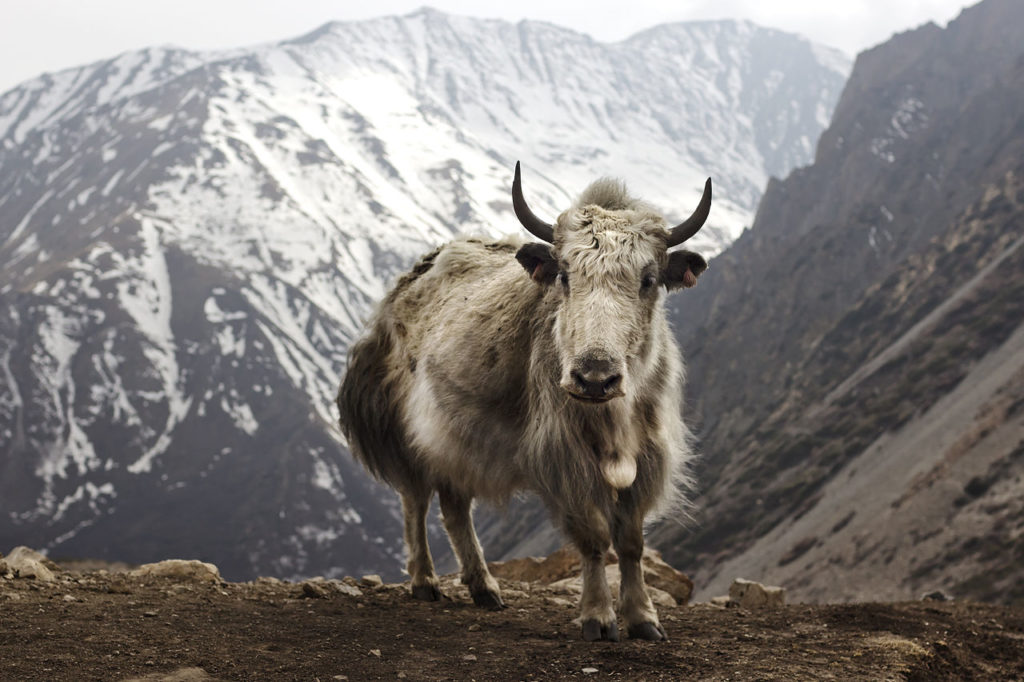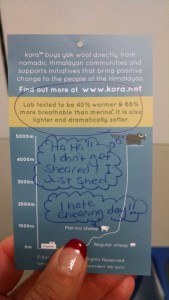It seems Merino sheep all over the world are baa’ing a sigh of relief because for once it’s not them getting sheared with sharp objects. Yak wool is the new natural fiber in town and the Kora Shola 230 Crew ($145) is a technical baselayer that is made entirely of yak wool.
What I Love
Warmth. My testing environment for the Kora Shola 230 Crew is literally all over the board. I have worn it as a baselayer when cycling in temperatures as low as thirty-five degrees and trail running in temperatures as high as forty-eight degrees. When worn on its own, I was comfortable. When worn as a baselayer under a lightweight jacket, I was too warm. This leads me to believe that when winter’s full fury is bearing down on me, I’m covered. Yak wool, according to Shora, is “40% warmer weight for weight, 66% more breathable and is 17% better at transporting water vapor away from the skin” than Merino wool.
I couldn’t validate that the Kora Shola 230 Crew is “40 percent” warmer than my somewhat-comparable Smartwool 240 g baselayer during the test without wearing a shirt that was half Smartwool and half Kora Shola Crew, and then spending a day outside in the cold running, cycling, hiking, whatever. So I resorted to common sense and a visit to Wikipedia to learn about yaks. Yaks live at high elevation (up to 19,000 feet above sea level). Snow, wind, sleet, hail, rain, yaks are unfazed by Mother Nature’s wrath. They’ve adapted to their surroundings by growing a soft wool under their shaggy outer coats to keep them warm and comfortable all year. Merino sheep, on the other hand, generally live at 3,200 feet above sea level. It makes sense that the animal that lives high in the Himalayas is going to produce warmer wool than the Merino sheep that gets to enjoy the temperate climates at a reasonable elevation.

Just as breathable as Merino wool. No matter how much mountain biking, bike commuting or trail running I did outside in temperatures that hovered between thirty and forty degrees, I never felt drowning in perspiration.
Just as long-wearing as Merino wool. I wore the Kora Shola Crew’s every day for eight days of bike commuting, mountain biking and trail running before I couldn’t stand it any longer.
Size. Spot on. I always wear a size small and my size small sample is fitted enough to wear under mid-layer or heavier jacket without feeling bunchy or restrictive. The length is ideal. It falls at my hip, making it long enough in the back and in the arms to wear for cycling.

Soft. This blew me away. It is much softer against my skin than even the fine-grade Merino wool. No rubbing, chafing or itching. I saw a lot of yak pictures while researching these leggings. Yaks have long, scraggly, dreadlocks. It doesn’t seem possible that the Shora 230 Crew would feel as silky and soft as they actually did.
Humanely-harvested wool. Yak wool is collected only during their natural bi-annual shed when the yak farmer (almost literally) walks around the pasture picking up the shedded undercoat from the ground and giving the yak a nice brushing (which they probably love because it feels good). No shearing or sharp objects required. Merino sheep are still sheared.
What I didn’t Like
Price. At $145, it could feel like taking a bullet for some buyers. But I’m a firm believe that you get what you pay for. The Kola Shora 230 Crew is many things. It’s great for anything that involves high-intensity pursuits in cold weather like fatbiking, trail running, cross-country skiing, downhill skiing, snowshoeing and hiking. When you think about it this way, $145 for a baselayer that plays this many roles, it isn’t so bad.
Final Thoughts
You need one. I highly recommend the Kora Shola 230 Crew. Yes, they’re pricey but if you’re looking to treat yourself to a quality piece of outdoor gear to keep you comfortable outside for years to come, and for a wide variety of outdoor pursuits, give them some consideration. So far this fall I’ve been wearing it for trail running and cycling on cooler days–both on its own and under a light jacket. But I am confident that I can wear this baselayer for winter camping, snowshoeing, cross-country and downhill skiing.
That’s why I love this baselayer so much. It’s relevant for every cool- or cold-weather activity.

